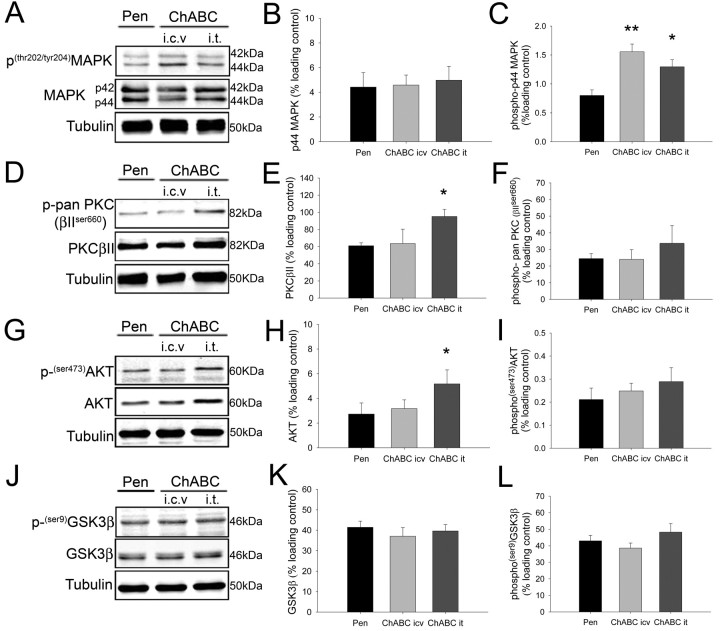Figure 8.
ChABC treatment upregulates multiple signaling pathways at the site of spinal cord injury. Four weeks after dorsal column injury, the expression and activation state of intracellular signaling pathways was evaluated at the site of injury. Representative Western blots and densitometric quantification are shown for p44/42 MAPK (A–C), PKC (D–F), AKT (G–I), and GSK3β (J–L). Treatment with ChABC using either ICV or IT delivery promoted a significant increase in the phosphorylation of p44 MAPK (ERK1) after spinal cord injury compared with penicillinase-treated controls (C) but did not alter the total expression level of the kinase (B). IT delivery of ChABC, but not treatment via ICV delivery, promoted a significant increase in the expression level of the PKC βII isoform (E) and the serine/threonine kinase AKT (H) compared with the penicillinase-treated group. The phosphorylation state of PKC (F) and AKT (I) was not significantly changed from control, and neither the expression (K) or phosphorylation (L) of GSK3β in the spinal cord was significantly altered by ChABC treatment. Densitometric values for target proteins or phosphoproteins were normalized against a β-III-tubulin loading control for each sample. Bar graphs represent mean normalized densitometric reading ± SEM of 4 animals per group. *p < 0.05, **p < 0.01, one-way ANOVA with block design using Tukey post hoc analysis.

